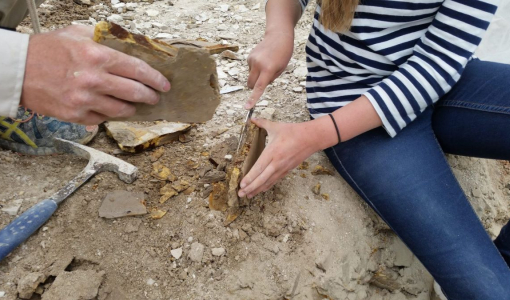Fur is a quite extraordinary island. Not just in Denmark, but in all of Scandinavia, the special lime-free mo-clay can only be found in the western part of the Limfjord, and in particular around Fur.
The special mo-clay is supposed to have been created through a combination of melted ice from the North Pole, volcanic ash and a changing climate more than 55 million years ago. The material was soft, and it would encase life on land and in the water, enabling us now, more than 55 million years later, to look at quite well-preserved animals and plants from back then.
As such, the mo-clay contains the history of life in the sea around Fur as it would have looked like 55 million years ago. The finds from the area include the world’s oldest common shrimp in addition to mussels, snails, starfish, brittle stars, shrimp, birds, turtles, sea snakes, crabs and around 75 different species of fish.
Go on a fossil hunt
Imagine being the first in 55 million years to look at a tiny creature from the past. Going hunting in the mo-clay dig is an incredible experience for both young and old. You can go hunting on your own, or you can join a guided fossil hunt with the Fossil and Mo-clay Museum and Fur Museum.
If you do make a fossil find, you may take it home with you unless it is a find of scientific interest – in Danish, ‘Danekræ’. The term Danekræ denotes a rare find or fossil that may constitute parts of, or entire, animal skeletons or craniums. Danekræ belong to the Danish state and must be handed in to one of the Danish natural history museums.
At Fur Museum, the best finds from the museum’s quite unique collection of fossils from the mo-clay are on display. The museum also offers a special exhibit of new finds, and maybe you yourself can find a new, extraordinary fossil for the museum’s exhibit? In any case, you are always welcome to bring your finds to the museum and learn more about what exactly it is that you can look at in the unique mo-clay of Fur.
Fur Museum is located 1.5 kilometres (0.9 miles) from Fur Harbour, a walk of less than half an hour.
Read more stories from Fur or explore exciting stories from other places.
Learn more about Fur Havn here.
Source: Fur Museum
